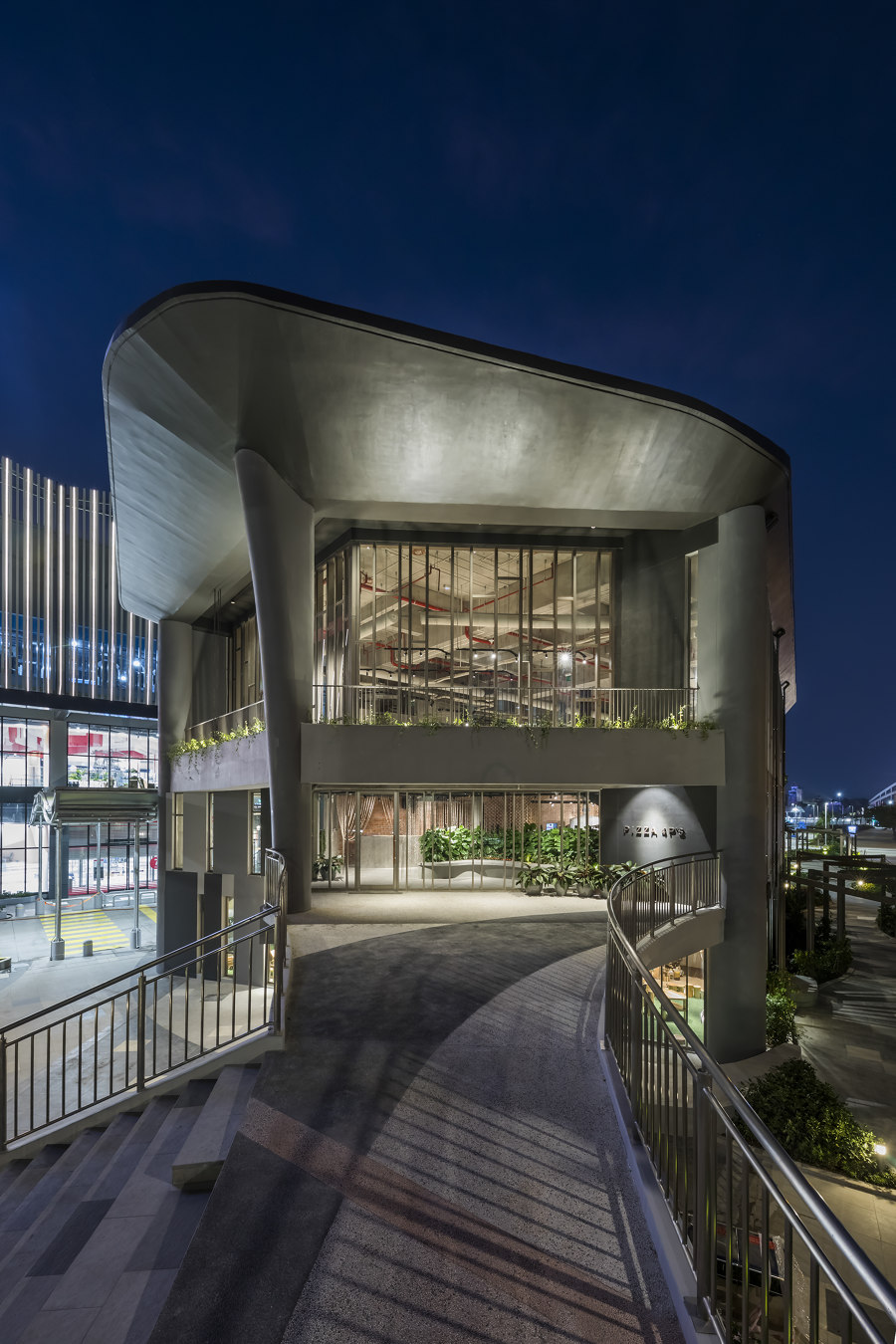Ark pavilion for Pizza 4P’s. Hai Phong is a logistics and industrial hub with the largest terminal port in Northern Vietnam. It is a port city at the mouth of the Red River, about 100km away from Hanoi. The project, named “Ark Pavilion for Pizza 4P’s” is designed as a standalone building at the corner of a large newly built shopping mall.
This project is conceived as a symbolic monument to capture both the unique background and values of the city and restaurant - Hai Phong as a port and industrial city, as well as Pizza 4P’s value of sustainable dining. The building is perceived as an ark docked in a port, which is represented by the large shopping mall. It is an ark pavilion where the history and memories of the city are embraced and displayed to the diners and visitors.
An approach with a three-dimensional landscape. The shopping mall adjacent to this project is a huge three-story building with a total floor area of about 160,000 square meters, visited by 200,000 people a day. The project is in a triangular site, the Southeastern side of the mall. Dynamic transitions with varying spatial scales have been designed to sensibly guide the visitors to the dining space from the massive shopping mall. The access is designed as a three-dimensional landscape with the main entrance being located on the second floor.
One approaches the restaurant by gently ascending to the flower garden. The visitors are then greeted by a tall atrium - 1.5 times higher than the typical mall’s ceiling height, creating a striking entrance to the restaurant. Above a pair of pizza ovens located in the heart of the restaurant, 9 North-facing skylights with varying sizes provide soft and gentle natural light into the dining area. Benjamin trees are planted next to every window, which will eventually grow taller to shade the building from intense tropical sunlight. The soft and filtered sunlight from the trees and sight of leaves swaying in the breeze present visitors a memorable dining experience. In the evening, lit-up trees emerge above the void, highlighting the massive vertical space.
Natural light and tactile reveal materials of the city of Hai Phong. The city of Hai Phong, with its terminal port, has many industrial materials available. Space was realized by using these materials together with natural light. Upon arrival, visitors are greeted with curtains made of light metal chains. The entrance and dining area are softly separated by these metal chain curtains and layers of creeper plants. The metal chains are also used on the façade, railings, and supports for the creepers. These chains reflect the sunlight from the skylights and vertical slits, creating an ever-changing natural light. Lighting fixtures are recycled from robust marine lighting found in the dockyard.
Each of them has a different shape, bringing uniqueness to space and creating an emotional atmosphere with their material massiveness. The terrazzo floor around the pizza ovens is embedded with a pattern made of diagonally cut brass rods at every 50cm interval. The pattern is also applied to the ovens, adding intricate details that evoke the industrial atmosphere in the city. The upper floor has three types of terrazzo with brass cutouts, which are embedded throughout the corridor, creating a subtle yet interesting walking experience. A brick feature wall behind the ovens acts as a textured backdrop to the dining area. Local fire bricks are used and arranged in simple yet dynamic pattern.
These patterns change depending on where one stands and direction of the light, like ripples in the ocean. The railings along the void are made of three different materials: steel plates, steel chains, and wooden members. These materials, selected from the city's fabric, provide not only a visual but also a tactile experience, drawing guests closer to where they are. This restaurant is an Ark Pavilion that embraces its local culture and history, intended to preserve, represent, and educate its identity to the future generation.
Design team:
Takashi Niwa Architects
Lead Architect: Takashi Niwa
Structure engineer: Obayashi Vietnam Corporation
MEP engineer: SMT Viet Nam Construction Joint Stock Company
Main contractor: Obayashi Vietnam Corporation
Interior contractor: CYN Furniture joint stock company

























